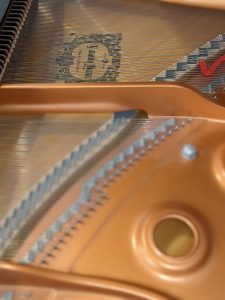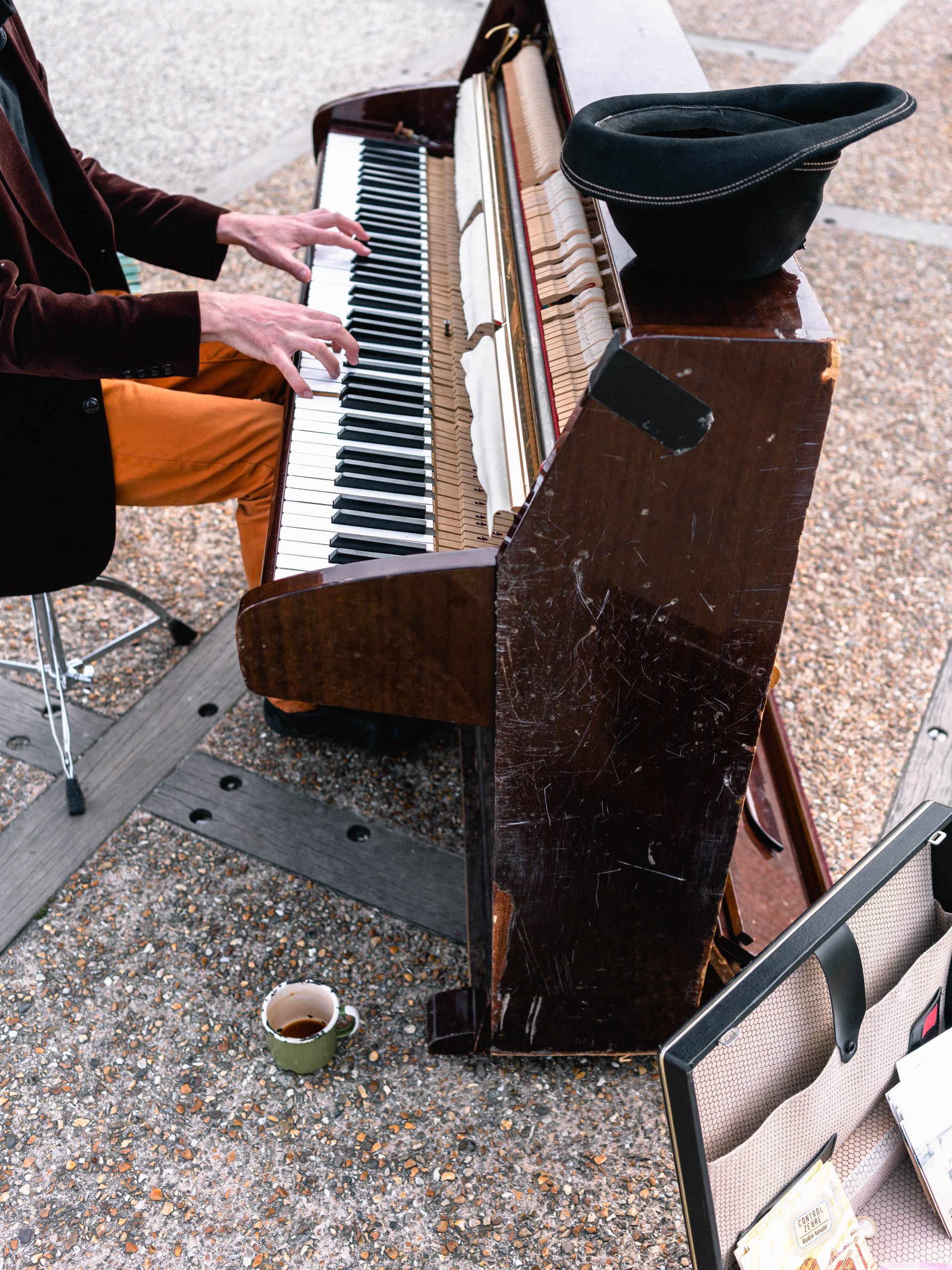For piano beginners and those wanting to acquire their first unit, there are so many different types of pianos out there to choose from. This article is the start of a series featuring the different types of pianos that one can acquire. With so many piano types, the three most popular kinds have been broken into groups: acoustic, hybrid, and digital. In this lesson, I’m going to feature Acoustic Pianos.
Favoured by more accomplished pianists, acoustic pianos produce a naturally rich sound. These types of pianos are considered a percussion instrument. Why? Once you press down on a key to produce a note, felted hammers strike steel strings inside. The vibrations in the string then travel to a soundboard, which amplifies the music. Generally, the harder you press a key, the louder the sound.

Professional pianists generally favour acoustic pianos as they feature up to eight octaves and create a more natural, fuller sound. Due to the way they are built, acoustic pianos do require some level of maintenance, which means you’ll need to have them tuned at least once every six months. This process involves tightening the strings to improve pitch. Although acoustic pianos are generally larger in size, there are different styles available, which vary in dimension.
Is an acoustic piano right for you?
Pros
Richer and more natural sound quality
Range reaches up to 8 octaves
Always beautifully and stylishly designed
Cons
Requires a larger, dedicated space
Mandatory regular tuning and maintenance
Not portable, unwieldy
Different Acoustic Pianos

Grand Pianos
There are 3 types of grand pianos: the parlor piano (or called the parlor grand or boudoir grand), the baby grand piano, and the regular concert grand piano. A direct descendant of the harpsichord, grand pianos have a horizontal body with strings that extend away from the keyboard. These large pianos use gravity as the means to return to a resting/normal state. Common characteristics of grand pianos include producing larger and richer sound and string inharmonicity. The latter means the degree to which the overtone frequencies (or called partials or harmonics) sound sharp in relation to whole multiples of the fundamental/root frequency.

Upright Pianos
Among the many types of upright pianos include the spinet, console, studio, and upright. Since these are compact versions of a grand piano, these take up less room in the household and are more likely favoured by pianists for their home instrument. Verticals are marketed as upright grand pianos, but be warned this label is very misleading. Upright pianos come with unusually tall frames and long strings. Currently, one can find these uprights in schools, churches, music conservatories, and university music departments. Being compact and doesn’t need a lot of dedicated space as a traditional piano, upright pianos are favoured for rehearsal and practice as they provide the sounds of a grand in a very small package.
Let’s debate on the two. Of the two acoustic varieties, grand pianos tend to be the more expensive. Their beautiful build and design also makes them popular as centrepieces in large rooms. Then again, compared to electronic keyboards, acoustic pianos seem to offer a lot less for one’s money. But I would argue that the natural piano tones that are produced surpass those of an electronic model.
With so many types of pianos to choose from, how can you ever narrow it down?
Do your research. Try to visit piano shops and music stores and try out the different acoustic pianos. See how they feel when you sit and play on them. Gauge your home or room and see if you have enough room for the unit that you are eyeing. It ultimately comes down to the amount of space you have, expertise, the size of the room you’re entertaining, and the amount of money you’re looking to spend. The choice is yours.